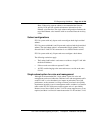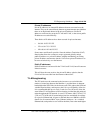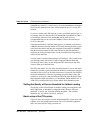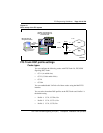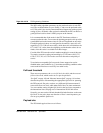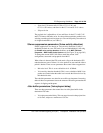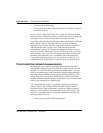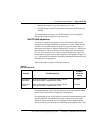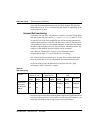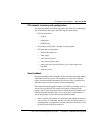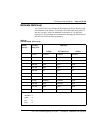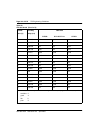
ITG Engineering Guidelines Page 139 of
378
ITG Trunk 2.0 ISDN Signaling Link (ISL) Description, Installation and Operation
• Monitor and trend one-way delay and packet loss, and
• Perform changes in the ITG and intranet when planning thresholds are
reached.
By instituting these new processes, the ITG network can be managed to
ensure that desired QoS objectives are always met.
Set ITG QoS objectives
You need to state the design objective of the ITG network. This sets the
standard for evaluating compliance to meeting users' needs. When the ITG
network is first installed, the design objective expectations have been set
based on the work done in “Measure intranet QoS” on page 114. Initially the
QoS objective is to be set so that for each destination pair, the mean+σ of
one-way delay
and
packet loss
is below some threshold value so that calls
between those site pairs are in a required QoS level. The graphs of Figures 15
to 17, with the QoS measurements, should help the technician determine what
threshold levels are appropriate.
Table 22 describes examples of ITG QoS objectives:
In subsequent design cycles, the QoS objective can be reviewed and refined,
based on data collected from monitoring of intranet QoS.
Having decided on a set of QoS objectives, the technician then determines the
planning threshold. The planning thresholds are then based on the QoS
objectives. These thresholds are used to trigger network implementation
decisions when the prevailing QoS is within range of the targeted values. This
Table 22
ITG QoS objectives
Site Pair ITG QoS objective
Fallback
threshold
setting
Santa Clara/
Richardson
Mean (one-way delay) + σ(one-way delay
)
<120 ms
Mean (packet loss) + σ(packet loss
)
<0.3%
Excellent
Santa Clara/
Ottawa
Mean (one-way delay) + σ(one-way delay
)
<120 ms
Mean (packet loss) + σ(packet loss
)
<1.1%
Excellent



